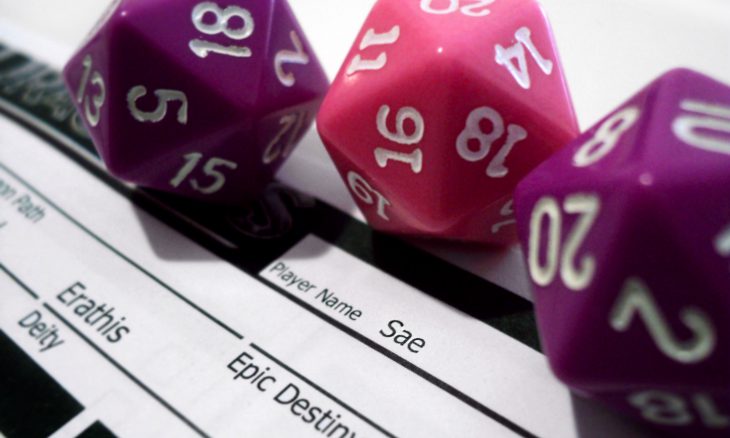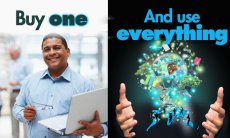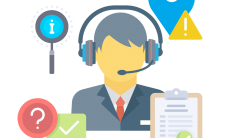“Just a spoonful of sugar helps the medicine go down
In a most delightful way” — Mary Poppins
There are two things that your employees really hate that are essential to your success as a company:
1. Training and development: taking time off from their precious work hours in order to go through those stultifying and seemingly pointless mandatory online continuing education hoops HR needs you and your staff to jump through every quarter.

2. Social media sharing: while getting your employees to share all the cool stuff going on at your company may seem like a no-brainer, why is it so hard to get folks to post from their private Facebook, LinkedIn and Twitter when you go out of your way to make it super-easy, sending around an email every week with requests and suggestions?
Gamification
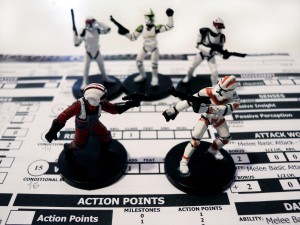 According to Wikipedia, “Gamification is the use of game thinking and game mechanics in non-game contexts to engage users in solving problems and increase users’ contributions.” It uses play, challenges, competition, and incentives to woo participants into gladly doing things that they’d have loathed before.
According to Wikipedia, “Gamification is the use of game thinking and game mechanics in non-game contexts to engage users in solving problems and increase users’ contributions.” It uses play, challenges, competition, and incentives to woo participants into gladly doing things that they’d have loathed before.
Edutainment
When I worked as a contractor to the Chief Information Officer (CIO) of the U.S. Department of the Treasury, my parent company, FC Business Systems, Inc, now General Dynamics, required me to complete SDL (self directed learning) modules in order to check off certain HR and continuing educational requirements. They were — and are — terrible, but they’re also smart. They don’t let you scroll forward super-fast like you can with Terms of Service, they know how fast the average person takes to go through the coursework and you really can’t go any faster. It’s torture. Gamification is perfect for this kind of thing.
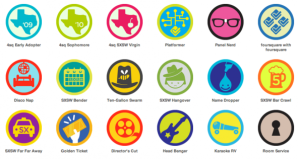 For example, GamEffective calls it Learnification. Learnification means using Gamification techniques for the purposes of training or employee on-boarding; the use of game mechanics promotes learning, review of materials and encourages a sense of completion.
For example, GamEffective calls it Learnification. Learnification means using Gamification techniques for the purposes of training or employee on-boarding; the use of game mechanics promotes learning, review of materials and encourages a sense of completion.
While badges, mayorships, and points are the most traditional methods of motivating users on such gamified online services such as the granddaddy of gamification, FourSquare, modern platforms like GamEffective offer entire graphical narratives that make the employees the heroes of the game.
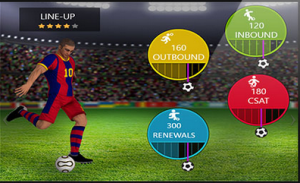 It sort of reminds me of my years as dungeon master when I played D&D or, years later, when I played Ultima Online late into the night. In the first case, my players kept the same character over any number of sessions, any number of missions. Their avatars were consistent and grew over time. There was a persistence that lasted well beyond the gathering. Same thing with UO — and I guess also with WoW and the rest of the MMORPGs: I would roll for a character who would stay with me and grow as I grew and became more powerful, acquired more inventory and experience, earned more gold.
It sort of reminds me of my years as dungeon master when I played D&D or, years later, when I played Ultima Online late into the night. In the first case, my players kept the same character over any number of sessions, any number of missions. Their avatars were consistent and grew over time. There was a persistence that lasted well beyond the gathering. Same thing with UO — and I guess also with WoW and the rest of the MMORPGs: I would roll for a character who would stay with me and grow as I grew and became more powerful, acquired more inventory and experience, earned more gold.
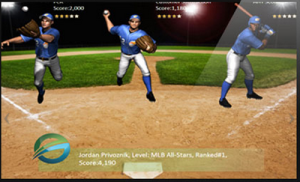 In much that same way, it seems like GamEffective offers the same mission-driven, task-driven, experience-driven, and education-driven persistence but in a corporate environment where the daily grind can become tedious and therefore inefficient.
In much that same way, it seems like GamEffective offers the same mission-driven, task-driven, experience-driven, and education-driven persistence but in a corporate environment where the daily grind can become tedious and therefore inefficient.
But it looks like you can map gamification across other divisions outside of eLearning. At least GamEffective offers the same sort of “carrot before stick” gamification strategies to sales, customer service and collaboration.
Though, in the case of this sort of mission-driven enterprise gamification, instead of princesses and orcs, using game narratives like baseball, basketball, soccer, and golf can make all this play feel less like the kiddie pool and more like fantasy football — something we all love to play.
Incentives, entertainment, competition, reward, becoming a hero, winning — there are all strong human motivators. Gamification is no longer just a novelty, it’s a powerful and persistent tool to encourage rather than threaten your team and your organizational family into moving the mission and ministry forward with the sort of efficiency and impact that usually gets lots between the C-suite and the staff. You really should give it a go, it might be just the thing you need to take your business to the next level. Hell, a pilot program never hurt anyone!
Good luck and go git ’em, Tiger!

